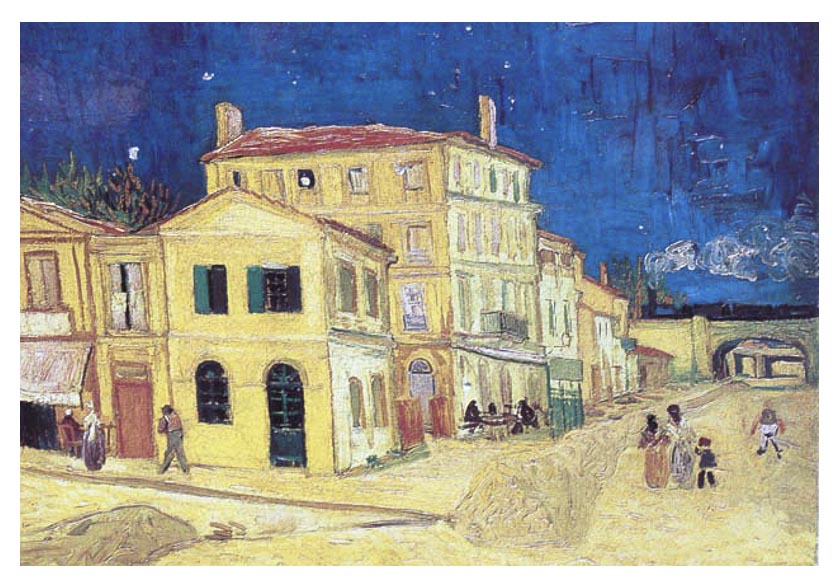
For a while artists well-established 19th Century artists, Paul Gauguin and Vincent Van Gogh lived at 23 Place Lamartine, the Yellow House, in Arles, in southern France. One thing they had in common was an intense fantasy life in which their own real lives merged with their reading.
Van Gogh (1853-1890) painted many self-portraits showing his red hair, a short beard and bright, expressive eyes. His father and grandfather were both Protestant clergymen. Vincent held deep religious beliefs his entire life of 37 years. He was the eldest of six children and at age 16, he had to leave school to find a job.

By 1888 neither painter had reputations in the world of art. Van Gogh was known to a small circle of painters and known to some as “an odd fellow with intriguing ideas.” The Yellow House had no furnishings or beds, but Van Gogh bought table linen. He held many decorating ideas. But little income. He painted five large pictures after moving into the Yellow House that left him exhausted.
In Arles, Van Gogh would stay out in the fields at his easel all day eating a little bread and milk. He was addicted to coffee. He bought coffee-making equipment for the Yellow House. Sometimes he would eat two eggs for breakfast thinking it was good for him.
Van Gogh wore either a blue workman’s jacket and trousers or white, both of which were liberally marked with paint. He felt that living in the country was healthier than the town wanting a “stronger sun” for his work. The Roman name for Arles, Arlate, simply means “town in the marshes.”
He was fascinated by the view across the plain from the heights of Montmajour. In the Summer, he looked to “that landscape where there was nothing but infinity, eternity.”
He finished two paintings that week “a new study of a sower, the landscape quite flat, the figures small and vague.” His second was the study of a ploughed field with the stump of a yew tree.
The question of sales was a sensitive one for Van Gogh. He had sold virtually nothing in his entire career as a painter. Just a handful of works sold, or exchanged, for a few francs with his friend the dealer, Tanguy. “I realize the necessity to produce…I cannot help it that my pictures do not sell,” he said lamenting.
Van Gogh was dependent entirely on his allowance from his brother, Theo. Van Gogh was uninterested in the merchandising or selling his art. He was, however, an enthusiastic homemaker and the Yellow House was filled with his work, his ideas, his taste and his clutter. Alcohol became a solace, and, a problem.
Van Gogh was not a musician even when he tried to learn the piano. He was not a player of sports or games. His leisure activities included walking, reading, writing, and talking. He wanted to find a soulmate with whom he could reach complete agreement or as he put it, say together, “That’s it.”
Yes, Vincent Van Gogh, your art remains and that is it. Treasured. Irreplaceable. Unique. Valued.

